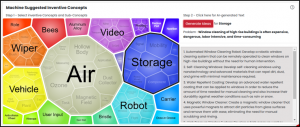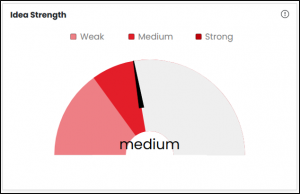
Patent Search Evolution: From Manual Work to Artificial Intelligence-Based: The manual patent search entailed going to the public search room at the United States Patent and Trademark Office and manually searching through books of published patents. The search was conducted using the United States Patent Classification Codes. Patents gradually transitioned from books to microfilms and then to CD-ROM, with the same method of search remaining constant: classification code search, patent document retrieval, and patent reading. The likelihood of missing relevant patents was relatively high, with patents not always falling into the expected classifications.
Patent Search Evolution
In the 1990s, patent documents were computerized into a centralized database that could be accessed via the Internet. Later, in 2006, Google Patents took this to a whole new level by allowing users to search for keywords anywhere within the patent document.
Because “simple keywords” can be numerous, the method was insufficiently precise. As a result, the chances of missing relevant patents were reduced but remained.
Multiple keyword searches using Boolean Operators resulted in faster and more relevant results. However, this was the second age of patent searches. Although useful at first glance, this search method had some drawbacks. It was both expensive and time-consuming.
With such a large volume of patent data, fully automated search can only be the solution to reduce human effort while not missing any important details. It is based on an integrated database of patents and includes data corrections, patent transactions to determine the current owner, status updates, and frequently other information, such as patent litigation, to determine who is active in asserting patents. AI-based patent search assists in conducting analysis accurately and quickly, addressing business questions directly. It also provides a detailed statistical analysis of patent activity in a specific technological area. Automated patent search aids in the translation of large sets of patent data into a collective overview of the current market situation. Automated tools work faster and more efficiently, reducing the possibility of error and providing a better view of current and disruptive technologies that can harm any product.
AI-based Patent Search
Patent searches powered by artificial intelligence (AI) enable everyone to quickly identify the most relevant technical literature. The keyword is transformed into an array of concepts and compared to a database of related concepts. The artificial intelligence-based search helps match ideas rather than just keywords, streamlining the search process. AI is advancing rapidly, with tools that are nearly “at par” with human intelligence. These AI-based tools have the knowledge and capability to perform permutation and combination, as well as apply logic to patent data to derive insights that a human researcher may find difficult to formulate.
The patent search evolution from manual to AI-based searches is astounding. Searching through millions of records is now simpler and more reliable thanks to automated tools that save a significant amount of time.
Automated Patent Search using XLSCOUT’s Novelty Checker
The Novelty Checker makes patent searches easier for inventors. The tool searches for similar inventions to yours to determine whether a patent is feasible.
XLSCOUT put the use of reinforcement learning to its AI-based Novelty Checker (patent searching tool) to get quality patent research reports in just 5 minutes. The Novelty Checker uses reinforcement learning to filter the noise from the prior art by pulling up the relevant results on top of the list. To be precise, it assists in conducting patentability search to help you ensure that your innovation is unique. By selecting a few relevant and non-relevant results, users can apply them to the result set. The system takes the user’s feedback and then learns from it. It uses conceptual searching and re-ranks the results by bringing the quality results to the top and sending the noise to the bottom.
Generate New Ideas Using Generative AI
AI is capable of understanding user technology and can generate new ideas. It aids in defining the scope and additional implementations for a better system design. Ideacue by XLSCOUT is designed to assist inventors with idea generation.
It can offer a number of benefits for inventors in terms of creativity, efficiency, and productivity. Some of these benefits include:
Generating New Ideas
Generative AI can be used to generate new ideas and concepts that an inventor might not have thought of on their own. This can help to increase the diversity of ideas and potentially lead to the discovery of new and innovative solutions.
Complementing Human Creativity
Generative AI can be used to complement human creativity by providing new ideas and solutions that might not have been thought of otherwise. This can help to enhance an inventor’s creativity and productivity.
XLSCOUT has employed Generative AI in its patent search tool. Using this, XLSCOUT is assisting individuals and organizations come up with new and innovative solutions to problems. Ideacue by XLSCOUT is designed to assist inventors with idea generation. We have created an Idea Playground powered by Generative AI for inventors. It suggests machine-generated inventive concepts to inventors, which they can combine with their own ideas to improve. These ideas can be generated based on the user’s preferred technology. As an interactive dashboard, Idea Playground allows users to select inventive concepts and sub-concepts and generate AI-based ideas based on them.

Inventive concepts act like idea triggers that can be used to simulate ideation and generate new ideas. Subsequently, these can be very useful for inventors. They assist them in thinking outside the box and developing creative solutions that they would not have considered otherwise. Along with ideation, idea evaluation is also an important part of the innovation cycle. XLSCOUT also includes an Idea Dashboard. The easy-to-use dashboard helps you with idea evaluation, brainstorming, and improving idea quality. It provides numerous other insights while significantly increasing the efficiency of research and development. The dashboard assists inventors in quickly assessing the strengths and weaknesses of their ideas in a few simple steps. It gives a qualitative indication of the strength of an idea. Subsequently, using the indicator, inventors can determine whether or not their idea is ready to move forward. Or whether it requires more brainstorming or iterations.


